Street lighting
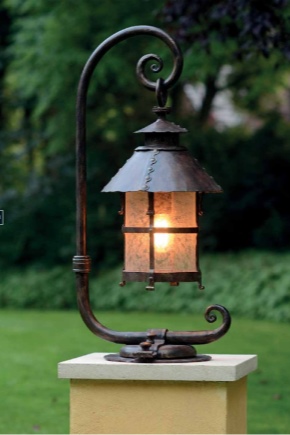
Street lighting today plays one of the most important roles in the life of both a big city and private detached cottages and garden houses. A safety function, orientation aid in the dark and, of course, a decorative function are inherent in modern street lighting.
Functions and applications
Street lighting today has many different functions.
The main function was and remains lighting for more convenient and safe movement in the dark, moreover, the movement is not necessarily a pedestrian, the light on the roadways helps motorists in orientation in space. For this, full-size street lights are installed, which are switched on every day at nightfall.
Special spotlights are hung on houses in the courtyards, which perform the function of both illumination of the facades of buildings and illumination of the local area. Here and illumination of pedestrian paths, driveways, playgrounds.
To save energy in yards, backlights with a motion sensor are often installed, which only works when needed.
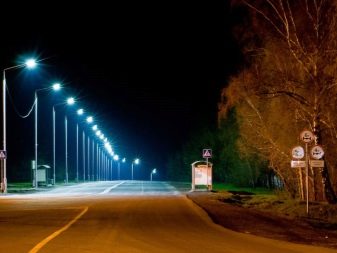
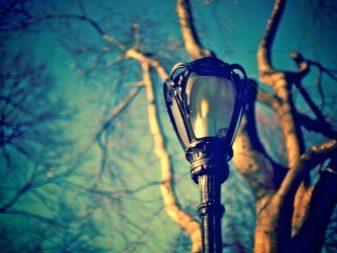
There is also a special industrial lighting function... Portable lamps, today more often LED, capable of being charged from sunlight or batteries, are installed on construction sites, in places of repair work on the roadbed and on other construction sites. The use of a luminous flux of various directivity and saturation allows you to continue repair work in any natural light or its absence.
Separately, it should be noted that today street lighting carries out decorative functions in landscape design... The use of different brightness, angles of propagation, colors of the luminous flux allows you to achieve an interesting effect for a summer cottage, chalet, garden. The highlighting of trees is actively used, this allows them to be distinguished against the general background.
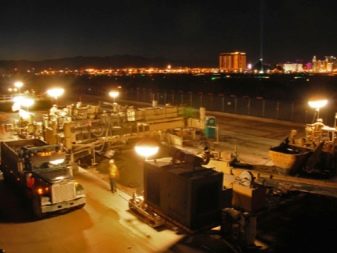
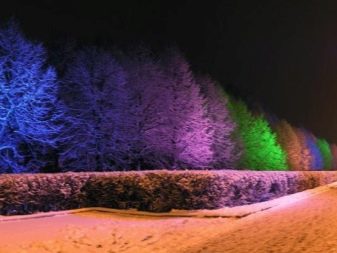
For a country house, the installation of special low tripods with illumination on the terrace or on the veranda is characteristic, which will not only allow you to sit up late enjoying the view, but also get a rather interesting design.
For a specially equipped winter garden, lighting will also not be a superfluous element, here it is most important to choose a lighting that will not distort the color of the plants.
For the entrance porch, a backlight is also used, which usually has a motion sensor and lights up only when someone is on the porch at night. And the path to the porch is often decorated with solar-powered lanterns; during the day they have enough time to stock up on energy to provide the necessary light flux at night.
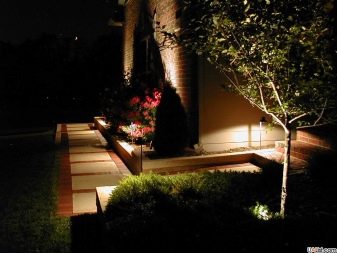
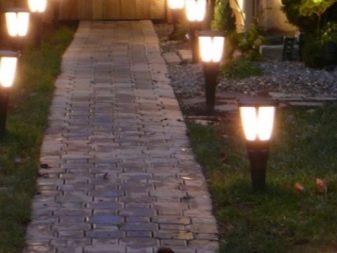
Separately, you can dwell on the security function of street lighting. It is used in conjunction with outdoor surveillance cameras, often there are motion sensors. Such lighting is used in specially protected areas, therefore, they have high brightness, various wavelengths and infrared radiation, a mandatory requirement for such light sources is a high degree of color rendering of the illuminated objects.
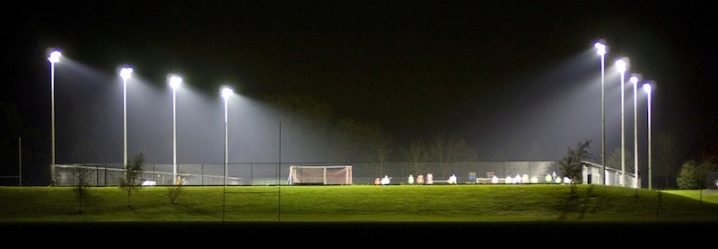
Views
As for the types of street lighting, first of all, 2 types can be distinguished, which are born from the direction of the light beam, more precisely, the object to which this beam will be directed.
Aimed at the building
This includes, for example, illumination of facades, porches. Such lighting can not only help a person navigate in the dark and find his home, but also favorably emphasize interesting design solutions, the advantages of facades.
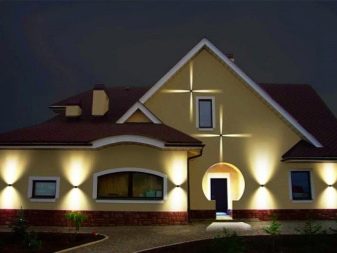
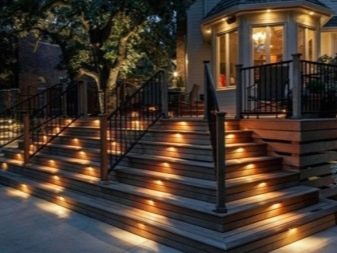
The type of house lighting also has its own special classification, the following types can be distinguished:
- Pouring. This is the brightest possible light from the spotlights, which is necessarily directed at the walls of the house, this helps to maximize all the features of the architectural structure of the building. Using light of different colors, it is possible to distribute colored accents on the facades.
- Contour lighting type. It is used to highlight individual elements of the design of the facades of the house. In addition, this type is important to use for highlighting balconies, loggias, window and doorways, roofs. Such lighting is performed using LED strips, which are fixed along the contour and illuminate a particular area with a selected color.
- Local. Illumination with a spotlight of a separate area. Like contour, this type is often used to illuminate balconies, windows, doors. Since a floodlight usually has soft diffused light, a spot type can add visual lightness and airiness to a building.
- Background. This type is often used for additional illumination of theaters, palaces and other buildings with architectural features such as columns, bas-reliefs, cornices. The background type of illumination will help to further emphasize the majesty and beauty of the object. Usually such a light source is installed behind the building, and the illumination goes forward or to the ground, and then the building is illuminated from below.

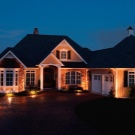
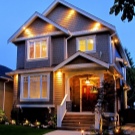
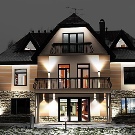
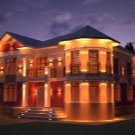
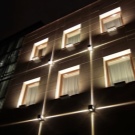
Light on the site
It is also used on roadways, in yards and so on. This includes street lights, illumination of paths, trees, local area.
For the light on the site, there is also its own classification by type:
- Pouring. Allows you to uniformly illuminate the entire area and bring the illumination level closer to daylight. The power of such lighting is quite high and requires high energy costs, which is not always advisable.
- Technical. This type just implies the illumination of paths, porch, wicket and other functional elements of the house for maximum convenience of using the above.
- Decorative. It is used to highlight individual decorative elements: various trees, garden gnomes, alpine slides and other design elements.
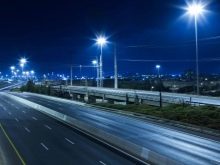
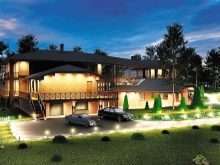
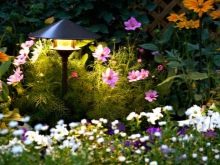
Landscape lights
Modern landscape lamps have various shapes, purposes and types:
- Lanterns on racks remain a classic option. They are installed along paths, used to illuminate courtyards, and add romance to parks when installed next to benches. The lampposts are usually metal, which allows you to choose different design options with the use of forged decorative elements. The lamp shade can also have a certain decor: it can be with a lattice, matte, or have a pattern.

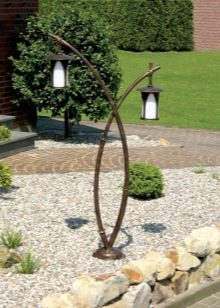

- Hanging options lamps can be placed both on houses and on elements of a personal plot, be it trees or gazebos. In the gazebo, on the terrace, suspended ceiling landscape lamps can function as a chandelier.
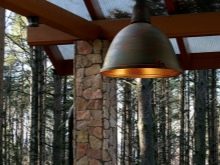
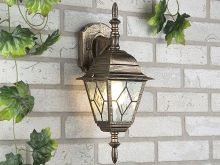
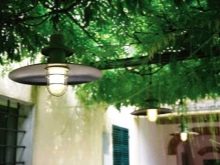
- Spot ground recessed luminaires have a distinctive feature - they can be mounted directly into the brick or concrete masonry of the walkway or directly into the ground. Based on the specifics of their location, they are as dust and moisture resistant as possible. Such lamps are most convenient for illuminating roads, paths on the site, a porch. In addition, this type provides low voltage lighting, which saves energy.
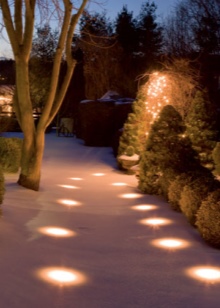
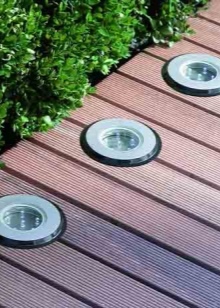
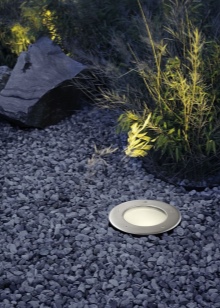
- Rotary lamps can be distinguished as a separate group. Most often they are set on the ground and have a special reversal timing.A reversal can occur both horizontally and vertically. Rotary luminaires with a lens have an additional light diffusion function.
- For highlighting individual elements of the facade can be used linear diode luminaires... In fact, this is a tape with LEDs attached to it. The most common feature of this type of backlighting is the ability to change the color scheme. Many different color options are switched using a special remote control.
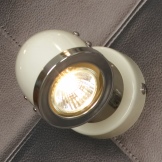
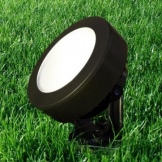
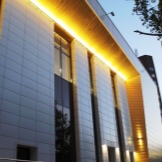

Another group can be combined with solar-powered luminaires. On a sunny day, they are charged and are capable of projecting a light beam of sufficient power for up to 14 hours to provide additional illumination of the garden area.
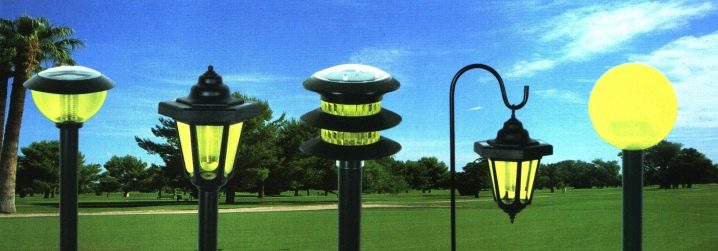
Any of the above types of landscape lights can be equipped with a motion sensor.
In addition, by bringing together all the elements of the street lighting used, you can connect them to one control system, which will automatically start these elements into operation at a certain time or under certain conditions, if it is an automated control system.
Spotlight
Separately, it makes sense to single out spotlights as a special type of street lighting, although in fact they also belong to the elements of landscape lighting, but combine the features of several types.
The main difference between the spotlight is the possibility of unidirectional illumination at a given angle.
Searchlights can be stationary and by the type of lantern to be installed on a metal pole of various heights, depending on the place and purpose. When installed, an electric cable is connected to the floodlight, which supplies energy to the device and provides a uniform glow.
The spotlight can be turned on either with a switch or by reacting to a motion sensor, which, as already noted, will help save energy.
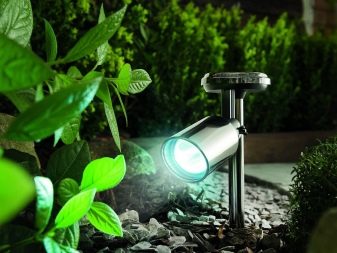
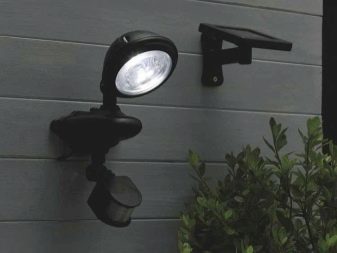
Portable versions are an alternative to spotlights. This type of floodlights is easy to move, they are equipped with a special handle on the body, which allows you to carry the floodlight from place to place without causing any difficulties.
You can install such a spotlight anywhere. You can do this using a special stand, tripod, or you can do without additional accessories. The connection is made directly to a 220W socket.

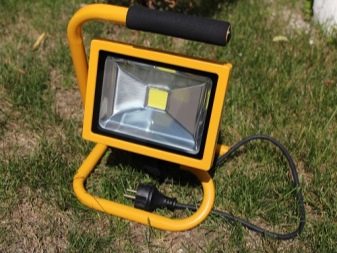
A floodlight, like a street spotlight, can be built into the ground or into elements of the house. For this, there are special models with increased values of protection against water and dust. Separately, portable floodlights on batteries or rechargeable batteries can be noted, however, they are used in landscape design much less often than options powered by a network.
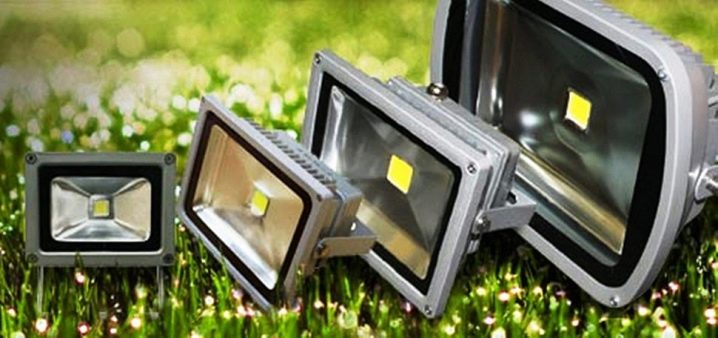
Forms
Today there are a huge number of different forms of landscape lamps. They can have both a fairly standard form, not decorated with additional elements, and pretentious pompous forms, complex geometric compositions, interesting style and functional solutions.
A beautiful decorative effect can be achieved with recessed spotlights... They come in many different shapes and sizes. Even an ordinary round lamp, due to its different diameters and additional decor, can create a completely different effect.
Recessed lights can be in the form of flowers and leaves, this option will be an excellent source of lighting for the lawn. Square and rectangular shapes will fit well with the brick and concrete masonry of a house or walkway.
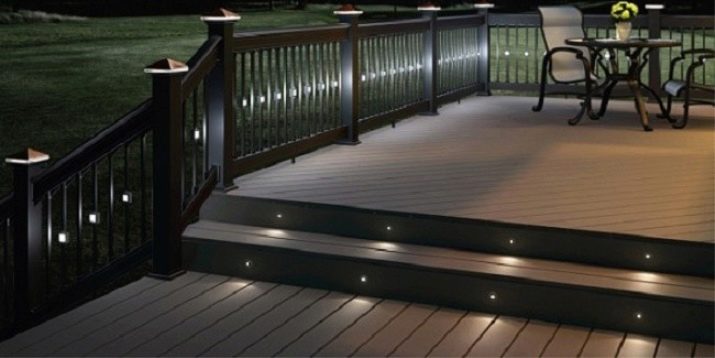
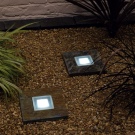
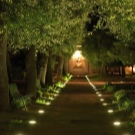
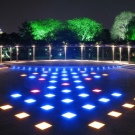
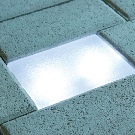
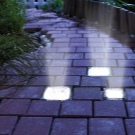
Another fairly common form is pillars... This option fits perfectly into minimalism and high-tech styles, since it is the most laconic and geometric shape. Most often, the height of such posts varies from 40 to 150 centimeters.
The emitted light, as a rule, is not very bright and has a rather limited angle of incidence, therefore it will not work to illuminate large areas with models of this form, but curbs, paths or a porch are quite acceptable for this lighting model.
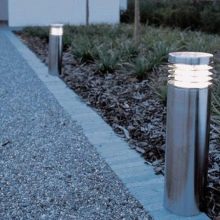
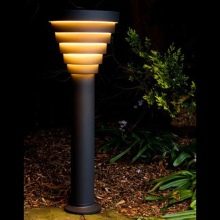
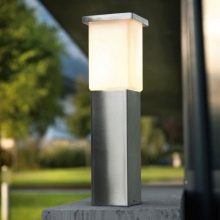
For general lighting, various shapes of luminaires on lampposts are most suitable.
There can also be round shades, they are often made matte in order to add sophistication and a sense of home environment, in addition, a matte shade will help create soft diffused light.
Often for classic interior solutions, light sources are used in the form of an old street lamp. This form can add romance and a touch of fabulousness.
Square or round spotlights can also be used with pole mounts. In addition, this form of luminaires is easiest to get along with motion sensors, which turn on only if there is any activity on the street.
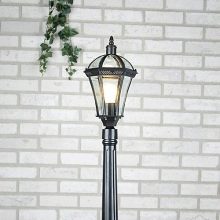
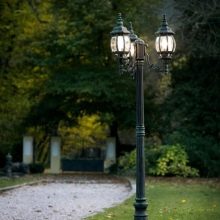

Small enough outdoor floor lamps, which are used as a decorative element in landscape design.
There are incredibly many forms here.
The simplest is, of course, the shape of a ball, cubes are also often found, often several stacked on top of each other, combined into a specific composition. Volumetric rhombuses, cylinders, candle flame shapes and many, many other options.
Such forms can be located directly on the ground, or they can have a special leg that will raise them a certain distance from the ground. They can take both the simplest laconic forms and have rich decor.

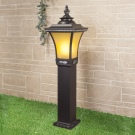
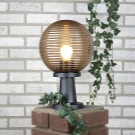

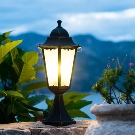
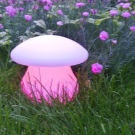
In general, there are a great many forms and designs of landscape lamps on the market today, and their choice will depend only on the buyer's imagination and the general design of the site.
Lamp types
As there are many shapes and types of street light sources, there are also many types of lamps suitable for them.
The most common types:
- Incandescent lamp. The oldest type of lamp. Inside it is an inert gas that heats up the metal thread inside, thereby generating a glow. Such a lamp is powerful enough for lighting both indoors and outdoors. In addition, these are the cheapest lamp models.
The main disadvantages include the fear of voltage surges, as they quickly fail and require regular replacement, and also have a high energy consumption rate.
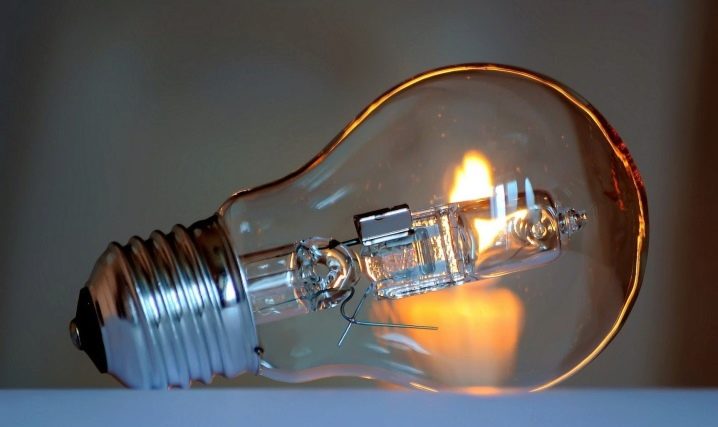
- Gas discharge or discharge. This type of lamp is a glass bulb filled with gas or metal vapors. In addition, 2 electrodes are placed in the flask, which are parallel to each other, an electric voltage arises between them, which provokes the combustion of the gas. The advantages of this type of lamps include: a high degree of color rendering of the illuminated object, in addition, they are quite economical and durable.
Among the minuses: high cost, toxicity, which requires special disposal conditions, radiation of flicker harmful to the eyes.
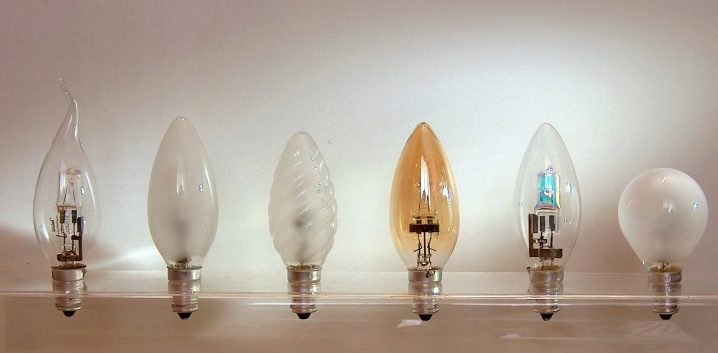
- Xenon. The principle of operation of such a lamp is the action of an electric arc filled with xenon. Such lamps are quite bright, they are able to clearly reproduce the color and all the details of the object, which is why xenon is so often used in the automotive industry. Such lamps consume several times less electricity, the light is close to daylight, therefore it does not cause eye irritation. As for the disadvantages of such lamps, there are practically no such lamps for street lighting in a country house, but for the automotive industry, this is just a high brightness of the light beam, it can blind the driver of an oncoming car, therefore, more and more restrictions appear on xenon.
Disadvantages for street lighting: rather high cost and expectation of full brightness from the lamp.
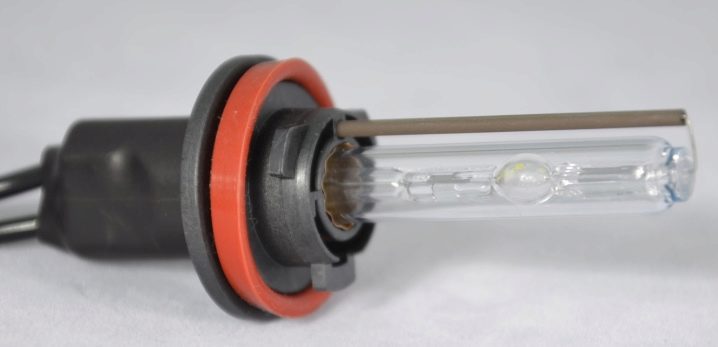
- LED or led. The most economical and safe lamps with a long service life. Electricity consumption led is 6-10 times lower than that of incandescent lamps, they are produced with different types of caps, so they can be matched to almost any type of luminaire.
LEDs are not afraid of voltage surges, so their lifespan will not be reduced by power surges. LEDs are rated for a 10-15 year lifespan. The disadvantages include: high cost, as well as a huge number of fakes and simply low-quality models on sale.

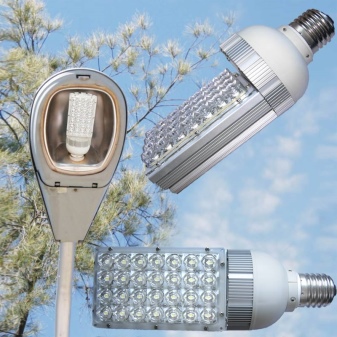
Instrument requirements
On your site, located far from neighboring territories and general streets, you can not pay much attention to the requirements for street lighting devices.
However, there are certain requirements for the light used in common areas, on city streets and in courtyards, which are regulated by a special SNiP document. It spelled out all the basic building codes and regulations, including restrictions and rules for lighting devices used for outdoor lighting:
- So, pedestrian paths and park areas should be backlit with diffused soft light, this effect can be achieved when using shades of a certain shape, the correct selection of the type of lamp for the luminaire. The power of such lamps should not exceed 125 W.

- If landscape lighting will be connected to a 220 W network, then it is better to connect through a transformer, it will help reduce the voltage level, because maximum safety can be achieved only with a generated voltage of 12 watts.
Objects carrying important information, be it a house number or street name, located on the facade of a building, should be illuminated by spotlights or a lamp.
- For street lighting lamps, color rendering is not so important, but brightness is one of the main indicators that should be considered when choosing them. If the lighting fixtures are on busy roads, then maximum brightness is important, but for private areas it is better to choose less bright lamps that will not create discomfort for neighbors with a too bright light beam.
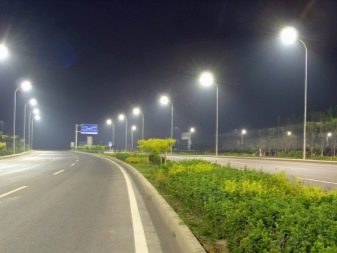

In addition, for lighting fixtures, it is necessary to take into account the factor of moisture and dust protection. The higher the protection index, the longer the lamp will last. In addition, models with the highest possible dust protection will require less effort to clean.
- The operated light sources must, among other things, meet fire safety requirements, they must not be made of flammable materials, and the combustion process must not contribute to the generation of toxic smoke.
- There are also special requirements for the distance between stationary light sources. For example, the distance between lanterns on the track can be from 40 to 750 meters. Of course, in the conditions of the site arrangement, the distance of 750 meters will be too large, but the distance still needs to be normalized at least in order to build the lighting network as correctly as possible.
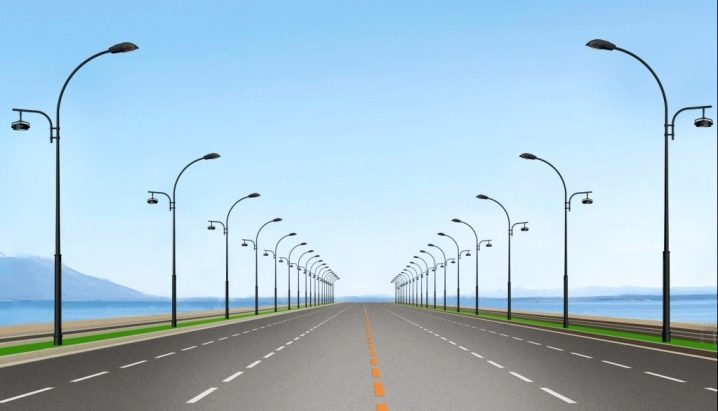
- Portable light sources and those that are planned to be moved around the territory must necessarily have a sufficient wire length.
- The norms may also depend on the type of road surface, materials of the house and the site, as well as on the shape and type of the lamp, therefore, it is best to entrust the development of lighting support within your own site to a specialist who will draw up a plan for the safest and correct location of light sources.
What are the requirements for networks?
The requirements for external lighting networks are spelled out in the rules for electrical installations.
Basic requirements can be found in clauses 6.3.25 - 6.3.37. The main thesis of the requirements is the following point: 6.3.25.This clause states that for correct and safe operation, street lighting networks must consist of insulated overhead wires or cable networks.
In special exceptional cases, the rules allow the use of a wiring system without insulation.
How to choose?
With an abundance of options on the market, choosing the right lighting elements for your country house is very simple - choosing a high-quality one, and choosing a high-quality and most suitable one is a whole art. Lighting devices should not only fulfill their main function of illuminating the territory, but also harmoniously fit into the design of the site.
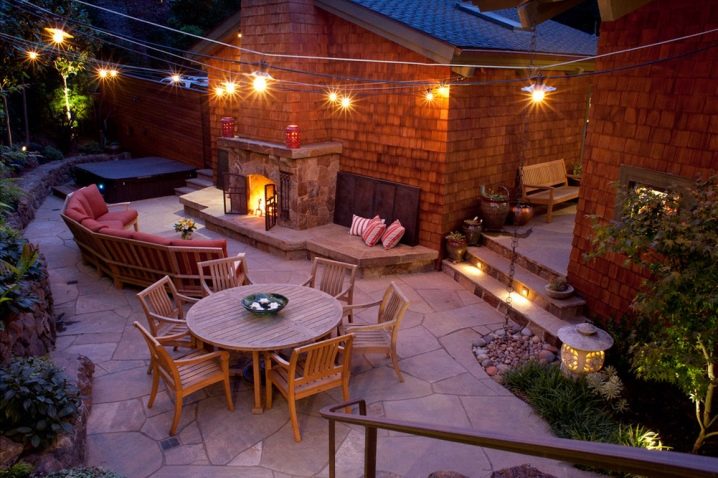
So what are the main points to pay attention to when choosing?
First of all, of course, the brightness of the light beam. It should be such as to illuminate the entire required area, but not be overly intense. Excessively bright lighting can create discomfort for both the inhabitants of the house and neighbors. In addition, the brightness of the light beam should directly depend on the illuminated area and the number of light sources. It is natural that the more light elements will be installed on the object, the lower the brightness of the light beam can be selected.
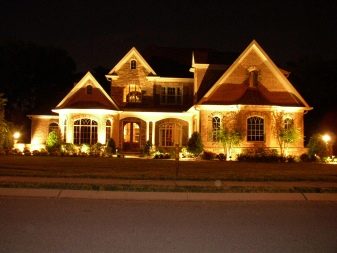

The purpose of the light elements will also play an important role.
So, the following types of lighting can be distinguished: long-range (such lighting devices are able to distribute the light beam over sufficiently long distances), as well as accent (designed to illuminate a specific object, focus on a specific point, highlight one or another element).
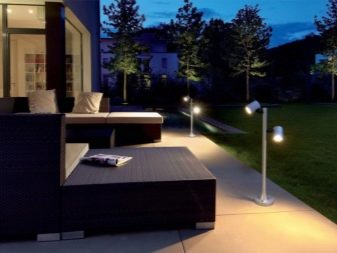
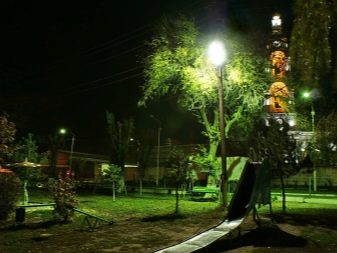
The choice of the type of lamp should also be determined by the purpose of the luminaire, the frequency of switching on and off.
The most common and cheapest option is, of course, the incandescent lamp known to all, you can also use fluorescent models or xenon, however, diodes will become the most suitable for landscape lighting. A high-quality LED lamp can provide maximum energy savings, which is important when you need to illuminate a fairly large space.
The service life of such a lamp can reach 10-15 years, which is justified even at a high cost of the lamp.
In addition, the LED model is created using new safe technologies, it does not contain any harmful gases, vapors of mercury and other chemical elements, therefore, no special disposal conditions are required. This important factor allows us to speak not only about saving energy, but also protecting the environment.

The shape of the luminaires and their mounting may vary, depending on their location, so when choosing, be sure to decide in advance on the installation site.
So, landscape lamps can be used to illuminate trees, lawns, decorative paths and other elements in the landscape, therefore they are either built-in type, or are located on special legs, stands, tripods, depending on the design.
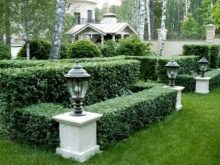
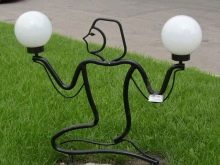
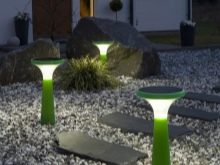
Architectural lighting, which is used to highlight architectural elements with a light beam, is usually attached to special clothespins or other adapted mounts.
Separately, it is worth paying attention to the class of moisture and dust protection of the selected devices. So, if the luminaire will simply be located in an open area, any standard measurement will do, usually IP64. But if it is supposed to place the lamp in a pool or an artificial pond, then it is worth choosing devices with a maximum level of moisture protection IP68.
Country house design ideas
A country house can be made in any style known today. The solutions of designers look interesting when the house and the yard are united by one interior solution, this adds style.
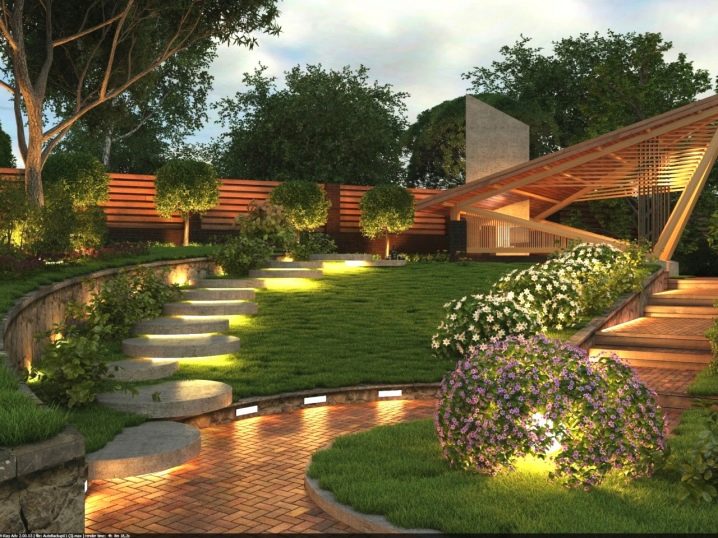
Country house should be done in pastel, natural colors.The predominance of wooden elements is the main distinguishing element of this style, therefore, lighting in the courtyard can be performed using lamps stylized as wood. For the gazebo and the house, you should choose a natural finish, such as wood or plaster, you can also pay attention to wallpaper with a floral print.
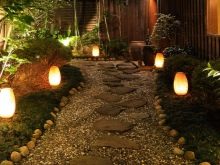
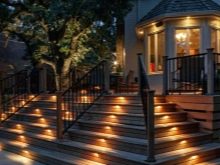
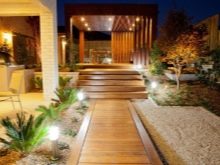
Country coziness will help achieve a style such as provence... The predominance of white in addition to natural patterns of lilac, green, cream colors will help to perfectly create the interior of this style. Here you can choose from white forged lamps or wood carved models. Several aged pieces of furniture will perfectly fit into the interior of both rooms and an outdoor gazebo.
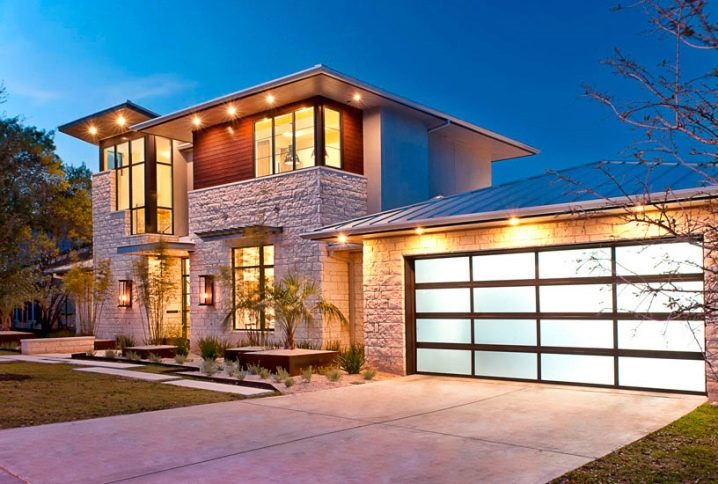
Hi-tech and minimalism they favor strict geometric shapes, solid colors. An excellent solution for the design of the living room will be a fireplace. Vibrant colors and accents also go well with the style. Pole lamps, as well as lamps made in the form of balls, cubes and other geometric shapes, of which there are many in the collections of various trading houses, can be used as lamps.
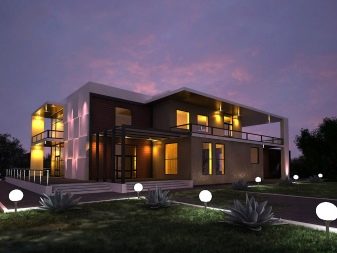
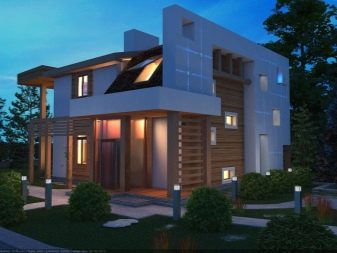
How to choose street lighting in your summer cottage, see the next video.













The comment was sent successfully.